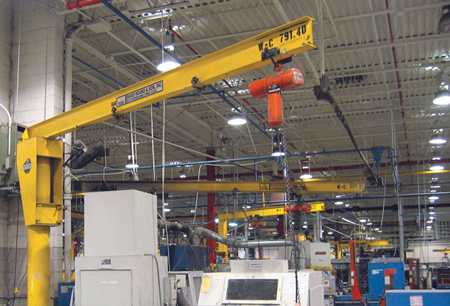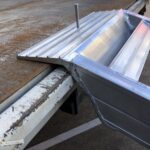The jib crane is a vital part of the construction industry, and is one of the most commonly used cranes, regardless of the industry sector. It comes with an arm which is mounted on an acute angle upwards from a pillar or a wall, which enables the crane to lift, move and lower different kinds of materials. The arm can be rotated along with the central axis through a full circle. Generally, the jib crane is used in industrial facilities, docks and warehouses for loading and unloading shipping containers.

This crane model has been in use since ancient times. In fact, the ancient Greeks invented the first jib crane. Their concept for the jib involved mechanical arm for lifting materials. This jib crane was widely used, not only by the ancient Greeks, but also by many other ancient civilizations. It was utilized in many construction projects. Throughout the years, the design of the jib crane was constantly improved, but mainly it remained identical to the classic design, until the industrial revolution and the introduction of the steam engine in the 1900s.
Today, the jib crane comes with innovative and compact design. It can be mounted and fixated on the pillar or a wall, or on a mobile chassis when used for temporary projects. The standard jib crane uses mechanical advantage of different pulleys for increased lifting capacity like the other similar lifting machines, such as levers and gears.
There are three main types of jib cranes on the market:
- floor-mounted jib crane,
- wall mounted jib crane, and
- fixed or traveling jib crane.
The modern jib crane is a very efficient machine and can be found in many industrial warehouses. The ends of the jib are wrapped with strong metal cabling; the hoist end is usually connected to a hook and the other end is connected to a winch. When the winch of the jib crane is activated, the pulleys create a lifting force. This lifting force is equal to the actual force of the winch, only multiplied by the number of the cables around the pulleys. To maintain the stability when loaded, the jib crane uses outriggers. Additionally, the hoist can be moved outwards and inwards along the length of the jib, providing greater flexibility.
So to conclude, the jib crane is used not only in the construction sector, but can also be found on commercial ships and other industry sectors. The jib crane is very important, because it provides better efficiency and productivity than overhead crane types.






















